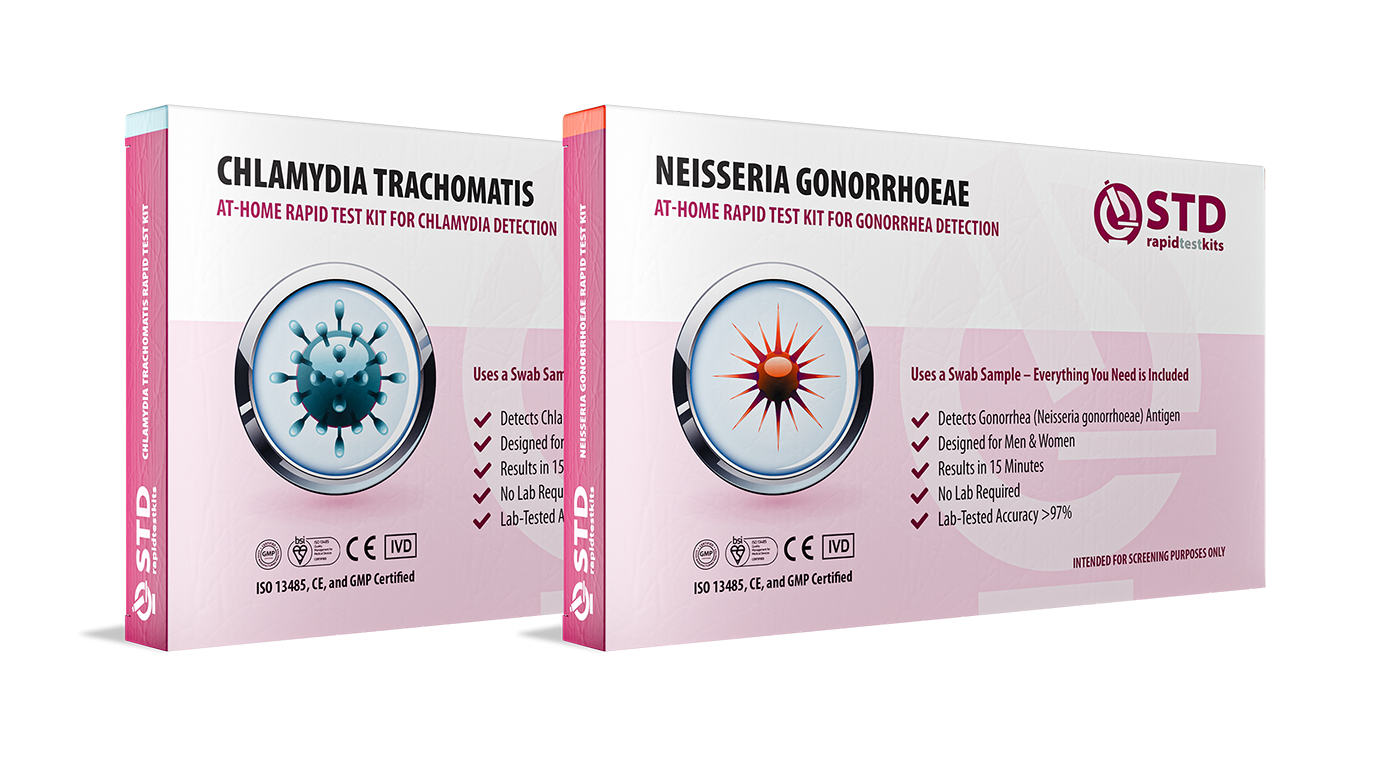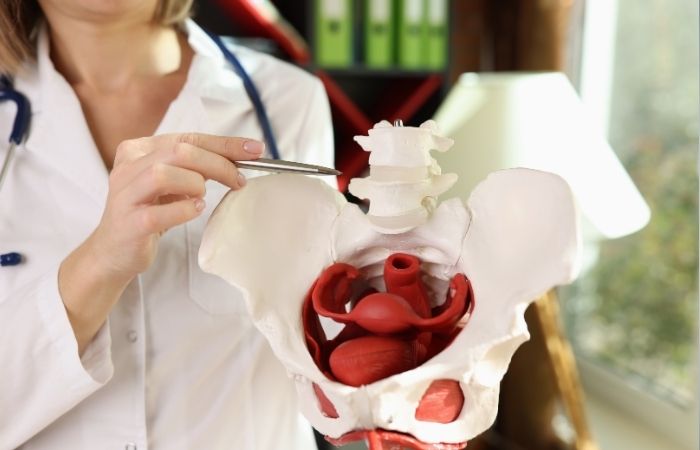Quick Answer: Yup. Untreated STDs like Chlamydia and Gonorrhea can mess with your fertility even if you feel totally fine. They sneak in, cause internal damage like scarring or blocked tubes, and you might not know until you're trying to get pregnant. Testing early is how you stop that from happening.
Why Fertility Can Be Damaged Without Warning
Here’s the truth about your reproductive system: it doesn’t always send a warning. You can feel totally fine, no symptoms, no weirdness, and still end up with blocked tubes, inflamed ovaries, or testicles that aren’t producing like they used to. All thanks to an STD you never even knew you had.
For folks with a uterus, untreated infections like chlamydia or gonorrhea can creep upward from the cervix into the uterus, fallopian tubes, and ovaries. From there, it’s a mess of inflammation, internal scarring, and sometimes permanent blockages. That means eggs might never reach sperm. Or they do and get stuck, causing an ectopic pregnancy. Either way, your fertility takes the hit.
- Chlamydia: Up to 70% of people with it don’t feel a thing, but it’s one of the leading preventable causes of infertility. Catch it early, and you’re golden. Ignore it? That’s when things get messy.
- Gonorrhea: Just as sneaky. It can seem harmless at first, but untreated, it goes hard on reproductive tissues, fast.
And yes, men can be affected too: low sperm count, inflamed testicles, and even hormone crashes. But for uterus-having folks? The damage is deeper and often harder to reverse.

People are also reading: Can STDs Really Cause Cancer?
The Hidden Role of Pelvic Inflammatory Disease (PID)
You’ve probably never heard someone casually drop “PID” at brunch, but it’s one of the biggest reasons STDs destroy fertility. Pelvic inflammatory disease happens when bacteria from an untreated infection, usually chlamydia or gonorrhea, crawl up into the uterus and fallopian tubes. The scary part? It’s not even the infection doing the worst damage. It’s your own body’s immune response lighting a fire inside you.
That fire, aka inflammation, scars tissue, twists tubes, and quietly sabotages fertility. And a lot of the time? You don’t even feel it happening.
- Fact: The CDC reports about 1 in 8 women with a history of PID struggle to get pregnant.
- Most people with PID never knew they had the STD that caused it. No symptoms. No warning.
PID often doesn’t show up until years later, when you’re dealing with chronic pelvic pain, blocked tubes, or an ectopic pregnancy you didn’t see coming. And by then, it’s not a “quick fix” anymore. It’s fertility treatment time.
How STDs Scar Fallopian Tubes and Block Fertility
Your fallopian tubes aren’t just passive plumbing; they’re delicate, coordinated, and essential. They scoop up the egg, guide it toward the uterus, and create a baby-making superhighway. But STDs can jack that up fast. Infections cause swelling, microscopic tearing, and internal scarring. And once those scars form? They don’t just go away.
That’s called tubal factor infertility, and it’s one of the most common reasons people with uteruses can’t conceive naturally. Here’s why it hits so hard:
- No early signs: Tubes don’t tingle when they’re under attack. You don’t feel it until you’re trying for a baby and failing.
- Permanent scarring: Even if you treat the infection later, the damage might already be done.
- Ectopic pregnancy risk: A fertilized egg can get stuck in a scarred tube. That’s not just tragic; it’s life-threatening.
One Human Reproduction study showed that people with a history of untreated chlamydia were far more likely to have tubal blockages or require IVF later in life. Translation? Early testing could’ve changed everything.
Why You Might Never Know It Happened
Here’s the gut punch most people don’t see coming: you might only learn about the damage after it’s too late to prevent it. Like during a fertility exam. Or a painful ectopic pregnancy. Or when your doctor says, “We’re seeing scarring. Let’s talk options.”
Here’s what that moment looks like for some:
“I had no symptoms, nothing weird. I only got tested because my partner had a scare. Turns out I had Chlamydia, maybe for over a year. My doctor says my tubes are partially blocked. We’re doing IVF now, but I keep thinking: if I had known sooner…” Sasha, 32
This isn’t rare. According to BMJ Open, nearly half of all Chlamydia-related PID cases are diagnosed only after someone has trouble getting pregnant. No pain, no drama, just years of invisible damage.
Check Your STD Status in Minutes
Test at Home with RemediumChlamydia & Gonorrhea Test

 For Men & Women
For Men & Women Results in Minutes
Results in Minutes No Lab Needed
No Lab Needed Private & Discreet
Private & DiscreetOrder Now $49.00 $98.00
For all 2 tests
Gender-Specific Impacts: Who’s Most at Risk?
If you’ve got a uterus, your reproductive system is basically a high-stakes obstacle course, and STDs don’t play fair. Because of the way your anatomy’s built, infections like chlamydia and gonorrhea can travel upward fast, quietly inflaming and scarring everything from your cervix to your fallopian tubes. That’s why PID, ectopic pregnancy, and infertility hit harder and more often in people assigned female at birth.
But let’s be clear: having a penis doesn’t make you immune. STDs just screw things up differently. Left untreated, infections like Chlamydia or Gonorrhea can lead to:
- Epididymitis: Painful swelling in the sperm transport tube behind your testicles. It hurts. It blocks sperm. It’s no joke.
- Orchitis: Inflamed testicles that can lower testosterone and mess with fertility (and your sex drive).
- Prostatitis: Chronic swelling in the prostate that can make ejaculation painful and affect semen quality.
The kicker? A lot of men don’t get screened regularly because “it doesn’t hurt” or they think screening’s not for them. That’s stigma doing its job, and it’s costing people their reproductive health.
What the Data Actually Says About Infertility from STDs
If you’re wondering whether all this damage is just theoretical, spoiler alert: it’s not. The numbers back it up, and they’re not subtle:
- CDC: Up to 24,000 women in the U.S. lose their fertility every year due to undiagnosed STDs.
- The Lancet: Just one untreated case of Chlamydia can raise the risk of tubal infertility by nearly 30%.
- Fertility and Sterility: PID-related infertility is still one of the most underdiagnosed reasons couples can’t conceive.
And let’s be real: most of this? 100% preventable. Testing regularly and treating early could stop tens of thousands of these cases cold. It’s not magic. It’s just a pee test and some damn antibiotics.
When You Don’t Feel Sick, But Damage Is Happening Anyway
Let’s murder this myth once and for all: “If I don’t feel sick, I’m probably fine.” That’s great logic if you’re talking about a hangover, not if we’re talking about STDs like Chlamydia or Gonorrhea.
Your immune system might dull the symptoms. But that doesn’t mean the infection is gone. It just means it’s lurking quietly while it inflames your tissue, scars your tubes, and compromises your fertility, one silent week at a time.
- You feel normal… but the bacteria is creeping deeper into your reproductive tract.
- You think you’re clean… but haven’t been tested in a year (or ever), and you could be passing it on.
- You’re losing fertility… even without a single symptom, because the damage adds up slowly and silently.
According to Johns Hopkins Medicine, up to 90% of people with Chlamydia don’t know they have it. That’s the danger. Not the STD itself, but how easy it is to ignore until it’s too late.

People are also reading: When Chlamydia Becomes a Relationship Issue
Why Regular Testing Is the Only Real Prevention
If you’re waiting for a symptom to show up before you get tested, don’t. That’s like waiting for your car to explode before checking the oil. Most STDs don’t give you a heads-up. They just do damage quietly, in the background, until you’re dealing with something serious.
That’s why routine testing is non-negotiable if you’re:
- Hooking up with new or multiple partners
- Not using condoms or barriers every single time
- Trying to get pregnant now, or think you might in the future
Think of testing every 3–6 months as basic reproductive hygiene. Like brushing your teeth. But instead of cavities, you're dodging blocked fallopian tubes or inflamed testicles.
And here’s the great news: testing is easier than ever. No awkward clinic convo required. You can do it all from your bathroom using something like the Chlamydia + Gonorrhea Home Test, private, fast, and way less scary than the consequences of not knowing.
How Early Treatment Stops the Damage in Its Tracks
This is where we flip the script. Because you’re not doomed. Caught early, most STDs can be treated with a simple round of antibiotics, no lasting harm, no scar tissue, no fertility drama. But timing matters.
Prevention isn’t about never making a mistake. It’s about paying attention and acting fast. Here’s the game plan:
- Test often, even if everything feels “normal.”
- Don’t delay treatment, get meds as soon as you test positive.
- Loop in partners so they can treat too (and not give it right back to you).
Every month you ignore an infection raises your risk of long-term damage. Don’t wait and wonder. Protect your future with a 15-minute test, no clinic required.
Rebuilding Fertility After an Infection
If you’ve already had a late diagnosis or past infection, don’t panic; it’s not game over. You might still conceive naturally, or get the help you need with the right tools and care.
Here are some of the most common ways doctors figure out what’s going on under the hood:
- HSG (Hysterosalpingogram): A dye test to check if your fallopian tubes are open or blocked
- Ovarian reserve testing: To see how many eggs you’ve got left and how good they are
- Hormone panels: To find out if the infection affected your hormones
If there’s damage, you still have options. Treatments like IUI or IVF can bypass blocked tubes or support sperm issues. But the earlier you start asking questions, the more doors stay open.
Your body isn’t broken. It’s just been through some things. Give it the info it needs to bounce back.
Check Your STD Status in Minutes
Test at Home with Remedium3-in-1 STD Test Kit

 For Men & Women
For Men & Women Results in Minutes
Results in Minutes No Lab Needed
No Lab Needed Private & Discreet
Private & DiscreetOrder Now $69.00 $147.00
For all 3 tests
Misconceptions That Cost People Their Fertility
The biggest threat to your reproductive health isn’t just chlamydia or gonorrhea. It’s the lies we’ve all heard that convince people not to test. Here's what costs people their fertility every single day:
- “You’d know if you had something.” , Nope. Most STDs don’t come with red flags. They come with silence.
- “It’ll clear up on its own.” , It won’t. Bacteria don’t get bored and leave. They settle in and cause permanent damage.
- “It was just once, and we didn’t finish.” , Doesn’t matter. One slip, one exposure, one infection... and sometimes, one blocked tube.
Testing isn’t paranoia; it’s protection. It’s not about shame or panic. It’s about showing up for your future self, and keeping options open for the life you might want someday. Regular screening is how we stop STDs from becoming fertility tragedies.
What Doctors Wish Everyone Knew About Silent STDs
Ask any OB-GYN or sexual health provider what frustrates them the most, and you’ll hear a common theme: people don’t take STDs seriously unless something hurts. But damage doesn’t always hurt until it’s too late to reverse.
“The lack of symptoms doesn’t mean the infection isn’t there, or that it’s harmless. We see too many people in their 30s who wish they’d taken their 20s more seriously.” – Dr. Mariam Youssef, OB-GYN
That’s the part we’re never taught: your 20s lay the foundation for your 40s. Prevention isn’t just about avoiding disease. It’s about protecting possibility, your right to choose when, how, or if you want to become a parent.
“I Had No Symptoms, So How Could It Be Chlamydia?”
That’s the trap. Chlamydia is a ghost. No itching. No odor. No urgent cramps. Just a silent intruder moving through your cervix, uterus, or fallopian tubes, sometimes for months, or even years, without a single signal.
The CDC says it loud and clear: up to 70% of women and 50% of men show no symptoms at all. That means most infections are found late, if they’re found at all. And what happens in the meantime? Scar tissue. Blocked tubes. Miscarriages. IVF consults that start with, “We’re not sure how long it’s been there.”
This isn’t about blame. You’re not reckless. You’re not dirty. You’re navigating a system that barely mentions these risks until they’ve already happened. If you didn’t know, it’s not your fault. But now that you do? You can act.
If your chest feels tight right now, or your gut just dropped, pause. Take a breath. You’re not too late. You can still test. You can still treat. And you can still protect your future with tools like the Chlamydia & Gonorrhea 2-in-1 At-Home Rapid Test Kit. It’s fast, accurate, and no one has to know unless you want them to.

People are also looking for: The Science Behind Retesting: How Long Should You Wait?
The Real Link Between STDs and Infertility (and Why No One Talks About It)
Most conversations around fertility stick to the usual suspects: egg count, sperm motility, and how long you’ve been off birth control. But here’s the part they rarely say out loud: undiagnosed STDs are one of the top causes of preventable infertility. Especially for people under 30. Especially when symptoms are nonexistent.
Infections like Chlamydia and Gonorrhea can quietly cause Pelvic Inflammatory Disease (PID), scarring your reproductive tract from the inside out. Fallopian tubes get damaged. Eggs can’t pass through. Ectopic pregnancy risk spikes. And it can all happen without a single red flag.
But here’s what really stings: most OB-GYNs don’t test for STDs unless you specifically ask. Even if you’re trying to conceive. Even if you’ve had multiple partners. Even if you’re already having symptoms no one’s connecting to an infection. Why? Stigma. Assumptions. Time. And a medical system that still treats sexual health like a side conversation.
Your body deserves better. Your future deserves more than guesswork. And testing is how you take control of it.
FAQs
1. Can you have an STD and no symptoms and still get infertile?
Yes. STDs like Chlamydia and Gonorrhea can silently scar reproductive tissue and block fertility, even if you feel totally normal.
2. How long would you be able to have Chlamydia before it affects your fertility?
It can start causing damage within a few months, especially if it leads to PID. The longer it goes untreated, the higher the risk of permanent issues.
3. Is PID the same as an STD?
Nope. PID is a complication caused by untreated STDs. It’s the inflammation and damage in the reproductive tract that comes after the infection is left alone.
4. Can STDs cause infertility in men as well?
Absolutely. STDs can mess with sperm count, motility, the prostate, and testicular health. Infertility isn’t just a women’s issue.
5. Will symptoms always tell you when an STD is damaging your fertility?
No. Most people who experience STD-related fertility problems had few or no symptoms. Waiting for signs is a gamble.
6. How do you know if an STD has already ruined something?
Tests like HSG scans (to check fallopian tubes) or semen analyses (to assess sperm health) can reveal internal damage from past infections.
7. Can STD-induced damage to fertility be repaired?
Sometimes. Early treatment helps avoid harm, but once scarring happens, IVF or other assisted reproduction options may be needed.
8. Do condoms always prevent STDs that cause infertility?
They reduce the risk a lot, but they’re not perfect, especially for skin-to-skin transmitted infections like HPV or Herpes.
9. Should I take a test even if I feel perfectly all right?
Yes. That’s the whole point. Feeling fine doesn’t mean you’re safe. Silent STDs are the #1 cause of fertility loss most people never see coming.
10. How can I discreetly test?
Use an at-home test like the Combo STD Home Test Kit. It’s private, fast, and no one has to know unless you want them to.
Take a Breath. Get Tested.
Feeling nervous? That’s normal. But don’t let anxiety talk you out of your power. Untreated STDs can impact fertility, yes. But the minute you get tested, you stop being in the dark. You start protecting yourself.
This isn’t about being perfect. It’s about being informed. Whether you want kids someday, or just want to stay ahead of the curve, testing is an act of care. For your body. For your peace of mind. For every version of your future self.
Do it privately. Do it quickly. Do it with tools that work, like the 6-in-1 STD At-Home Rapid Test Kit from STD Rapid Test Kits. You deserve clarity. You deserve protection. You deserve options.
Sources
1. Mayo Clinic – Pelvic Inflammatory Disease
2. Stanford Children’s Health – Chlamydia Can Lead to Infertility
3. PMC – Effects of Chlamydia trachomatis Infection on Fertility (case series & implications)
4. The Lancet Infectious Diseases – Risk of Reproductive Complications Following Chlamydia Infection










